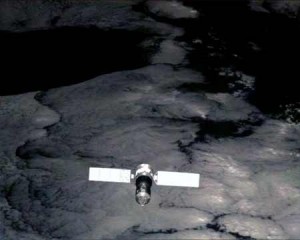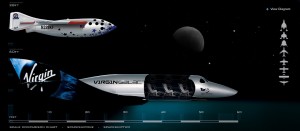The Space Race driven by ideology, economics, nationalism, and the military fuelled the technological advancements in rocketry, robot spacecraft and human presence beyond Earth’s atmosphere. The ground shifted, however, with the end of the Soviet Union as a rival to the United States and NASA.
As the 20th century came to an end the outward urge to send humans to places like the Moon, near-Earth asteroids, and Mars, no longer were seen as imperatives of national policy. The big discoveries came from robot spacecraft, orbiters and mobile landers as they circled distant planets, journeyed to asteroids, or landed on and began exploring Mars.
Human occupation of space remained bound to low-Earth orbit. The International Space Station (ISS), conceived in the 1990s, assembled starting in 1998 and completed in 2011, represents the sole human-inhabited outpost in near-Earth space today. As impressive as it is, weighing 420,000 kilograms (925,00 pounds), and measuring 109 meters (357 feet) from end-to-end, the ISS lacks the cachet of the Apollo Program.

The post-Apollo human era in space had been dominated by two very different space programs by the former ideological rivals. The American-built Space Shuttle program began in 1981 and ended in 2011. The Soviet MIR space station took ten years to build starting in 1986, became Russia’s program falling the collapse of the Soviet Union, and after completion in 1996 remained occupied continuously until 2001.
To date over 500 humans have travelled beyond Earth’s atmosphere, most into low-Earth orbit. Of these, 27 flew beyond Earth orbit and 12 walked on the surface of the Moon. In comparison our human population has grown from 3 billion at the time of Yuri Gagarin’s first human in space flight to 7 billion plus today.
Futurists of the 1960s predicted human space voyages to Jupiter and beyond. Arthur C. Clarke’s, 2001: A Space Odyssey, reflected in its timeline the outward spirit of adventure that came from early human space flight achievements. Those futurists envisioned lunar colonies, human voyages to near-Earth asteroids and Mars. But that’s not what happened. Instead the high tide of human space exploration ended with Apollo and the Moon landings. Space remained an important area for human activity but the romance of humans travelling beyond Earth was gone even though more countries were involved with space. Today, in fact, we have approximately 60 nations with formal space agencies and programs. Ten agencies have launch capability. And of these only three can launch humans into near-Earth orbit.
The European Space Agency has been a partner in the development of the ISS and has sent a number of its members to the space station on the American Space Shuttle and Russian Soyuz spacecraft. Other countries have also joined in among the 500 who have experienced space.
Recently China has launched its own human Shenzhou space flight program sending its first taikonaut (the Chinese equivalent to astronaut or cosmonaut, the American and Russian terms) into orbit in 2003. A second successful launch with two taikonauts in a multiple-day flight occurred in 2005 and a three-man crew followed with a spacewalk by one taikonaut in 2008.

In 2011, China launched their first space station module, Tiangong and followed this with a successful unmanned Shenzhou-8 launch and docking of the two. China has announced its plans to build a 54,000 kilogram (120,000 pound) space station by 2020.
Not to be forgotten is the stirring of new players with space launch capability and ambitions to put humans in orbit. Inspired by the Ansari X Prize, a $10 million award given to the first company to launch humans into suborbital flight twice over a two week period, the cheque was awarded to Scaled Composites and their spacecraft, SpaceshipOne. Scaled Composites were one of 25 companies who set out to win the award. Many of them continue to build their technologies with the goal to commercialize human spaceflight. SpaceShipTwo, the successor to the X Prize victor, is planning to launch commercial suborbital flights through its partner Virgin Galactic in 2015.

SpaceX, a company that did not participate in the X Prize, has developed its own rocket launchers and capsules and is scheduled in May 2012 to send an unmanned cargo carrier to the ISS. Called Dragon, the spacecraft has been designed for both manned and unmanned low-Earth orbit missions.

As we can see the end of the first decade of the 21st century our adventure into space continues to have very little of the human in it. But that is about to change. Where we have truly experienced the thrill of new discovery has been through robotic space exploration, the subject of our next installment on space and humanity in the 21st century.















